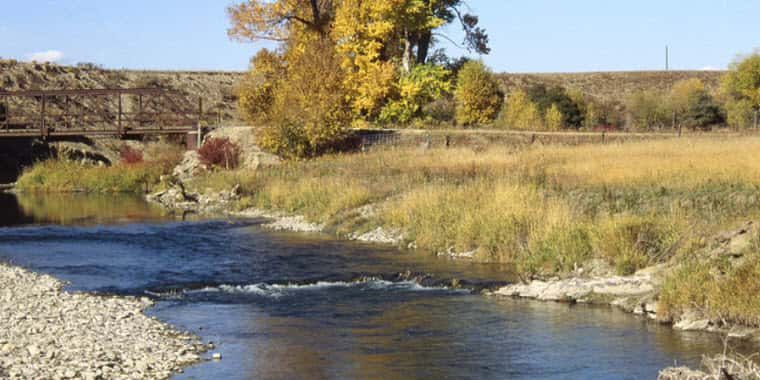Op-Ed by Kristen Juras
Like other Montanans, I enjoy recreating on streams and public lands with my family. The abundance of recreational, hunting, and outdoor opportunities is part of what makes Montana the last best place. As a candidate for the Montana Supreme Court, I am frequently asked about my position on access to Montana’s waterways. In my opinion – the law is settled. Current law in Montana safeguards the public’s right to use surface waters for recreational purposes while protecting the rights of riparian landowners. And only the legislature (not the courts) can change the current laws.
Under early Montana law, the public’s ability to use surface waters varied depending upon whether a waterway was “navigable” (capable, in its ordinary condition, for use as a “highway for commerce”) or “non-navigable.” Early law protected the public’s right to navigate, fish, and hunt on navigable waterways, but did not recognize a public right to use the streambeds or banks of non-navigable waters without landowner permission.
In 1972, Montanans adopted a new constitution declaring that all waters within Montana are the “property of the state for the use of its people.” Relying on this constitutional provision, the Montana Supreme Court in 1984 abandoned the long-standing distinction between navigable and non-navigable streams and ruled that the public has the right to recreate, hunt, and fish between the high water marks on all waters in Montana that are capable of recreational use – regardless of navigability. At the same time, the Court emphasized that its ruling did not grant to the public a right or easement to cross private property to get into the streams.
Shortly after that decision, the 1985 legislature adopted the Montana Recreational Use of Streams Act, codifying the right of the public to recreate on rivers and streams. The Act expressly does not grant any easement or right to the public to enter onto or cross private property in order to use those waters. Recreationists must remain between the high-water marks of a stream and must access the water via recognized public land or existing easements. The Act specifically allows landowners to construct fences across streams to manage property or livestock. If an artificial barrier exists, the public may portage around the barrier and enter private property above the high-water mark “in the least intrusive manner possible.”
There have been some important developments after the 1985 Act.
A 1987 court ruling clarified that the public’s use of streambeds and banks is not unlimited; such use must be of minimal impact and must respect the property rights of riparian owners. For example, overnight camping or big-game hunting between the high water marks of a stream passing through private property is not allowed without landowner permission.
2009 legislation confirmed that public bridges may be used to access surface waters. This legislation also recognizes the right of landowners to fence up to a bridge to manage livestock and property, as long as a gate, stile, or other adequate passage is provided for public access to the water. The cost of materials, installation, and maintenance of these public passages is borne by the state.
In summary, current Montana law clearly recognizes the right of the public to use natural waterways that are capable of recreation. To protect landowners, the law requires the public to remain within the high-water marks of the waterway, unless an artificial barrier requires a portage above the high-water mark. If a portage is necessary, it must be made with minimal impact.
The law is a good balance between landowners’ ability to protect their property and the public’s right to use the waters by requiring recreationists to access a stream through public access sites, which include public bridge rights-of-way. Private landowners statewide work in concert with Montana Fish, Wildlife and Parks to lease public access sites at locations that are both convenient to the public and best suited to meet the public’s needs.
Under Montana trespass law, a trespass is not criminal unless the landowner has posted no-trespassing signs or has marked the property with fluorescent orange paint. To be able to seek the help of law enforcement authorities in preventing trespasses, a landowner should comply with these notice requirements. But even if a property is not posted, a landowner who finds a trespasser on his or her private property has the right to demand that the trespasser leave.
It is the responsibility of the judicial system to fairly, consistently, and impartially apply these settled laws to specific cases involving individualized facts. The courts will likely be called upon in the future to determine whether a particular bridge is public or private and the width of bridge right-of-ways, to locate the high-water marks on a stream, and to address whether there is a right of portage around natural barriers (the Act only addresses portages around artificial barriers). The courts do not have the authority to make any significant changes to existing law – that authority is reserved to the legislature under the Montana constitution. So don’t be fooled by those who are yelling wolf that the public’s right to use waterways for recreation is somehow in jeopardy — that’s a distraction from the real issues surrounding the upcoming elections for the Montana Supreme Court.
Kristen Gustafson Juras of Great Falls is a candidate for the Montana Supreme Court. She has practiced law for 34 years and has taught for 16 years at the University of Montana School of Law, including stream access and property law.
Photo courtesy of USDA NRCS


